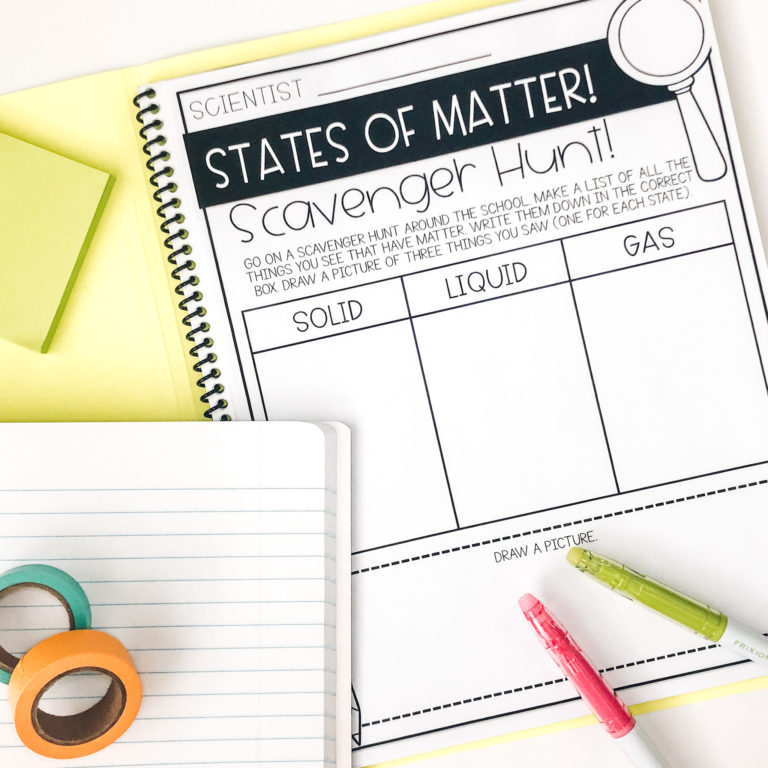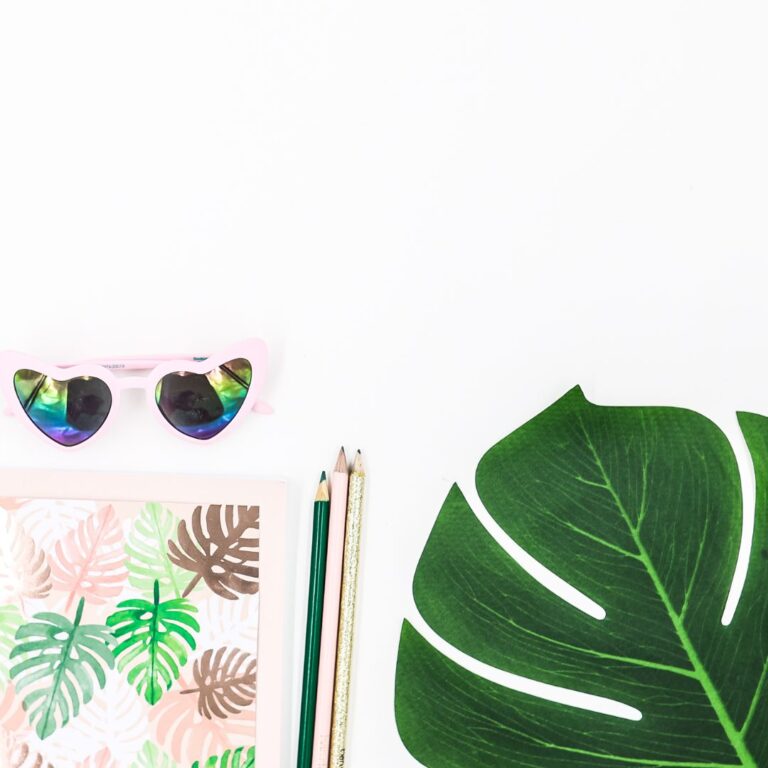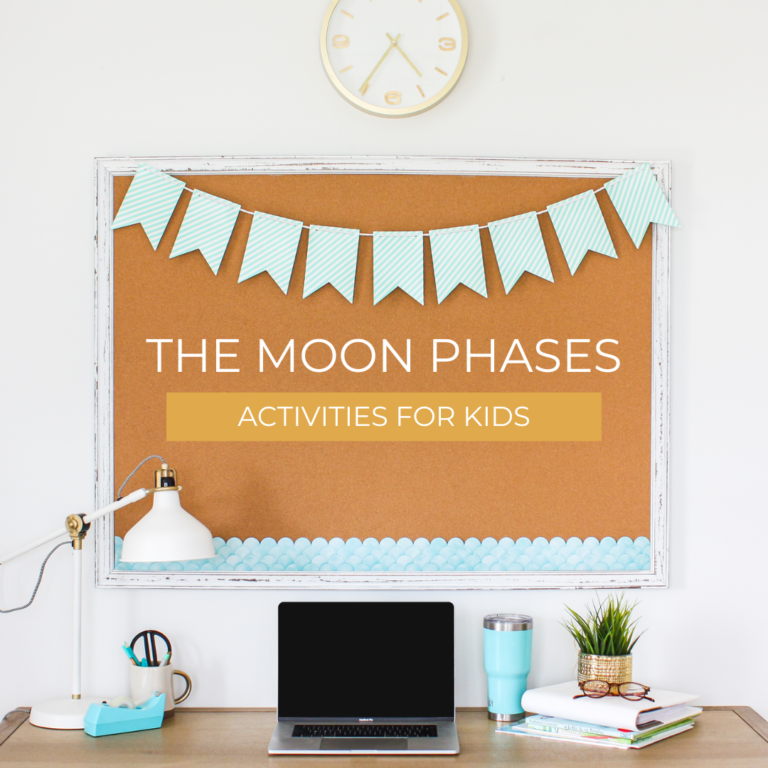Teaching Sound Energy: Science Activities for Kids
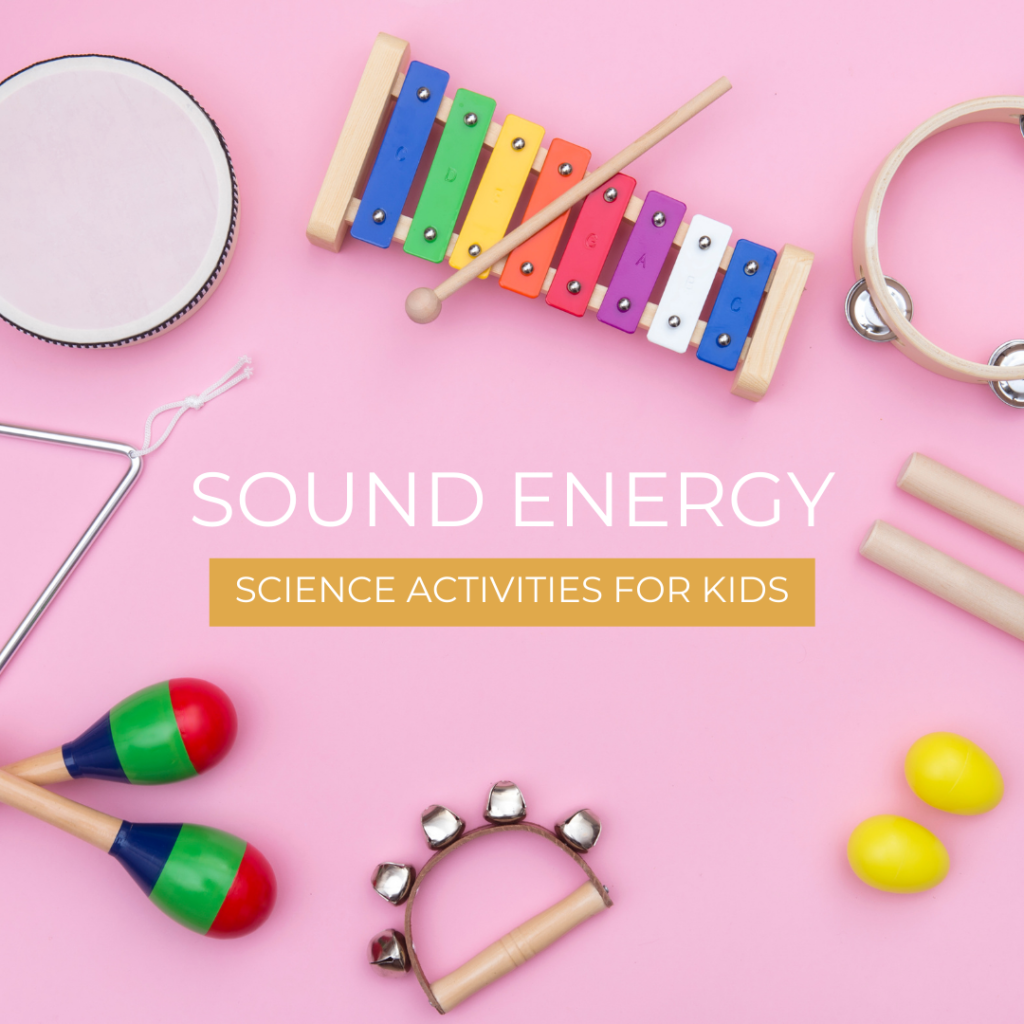
Planning a unit on teaching sound energy to 2nd grade with our students in mind means making sure to add in some fun hands-on experiments! Students might not know what energy is, but they sure have a lot of it!
In this post, I’ll explain my favorite tips and experiments when teaching sound energy to 2nd grade. So, let’s jump right in!
Topics to Cover When Teaching Sound Energy to 2nd grade

When teaching sound energy to second grade, you should cover some important key concepts. First, students should understand that sound is created by vibration. Next, they need to know that when sound travels, it is known as sound waves. Second-grade students also need an understanding of what sound waves look like.
After covering this, you can then move on to investigating the difference between volume and pitch. (There are so many fun activities for this!) Another topic to cover during a sound unit is how sound can travel through different mediums.
FREE Forms of energy anchor charts
Grab some free anchor chart templates to help you teach your class about sound, light, and heat energy!
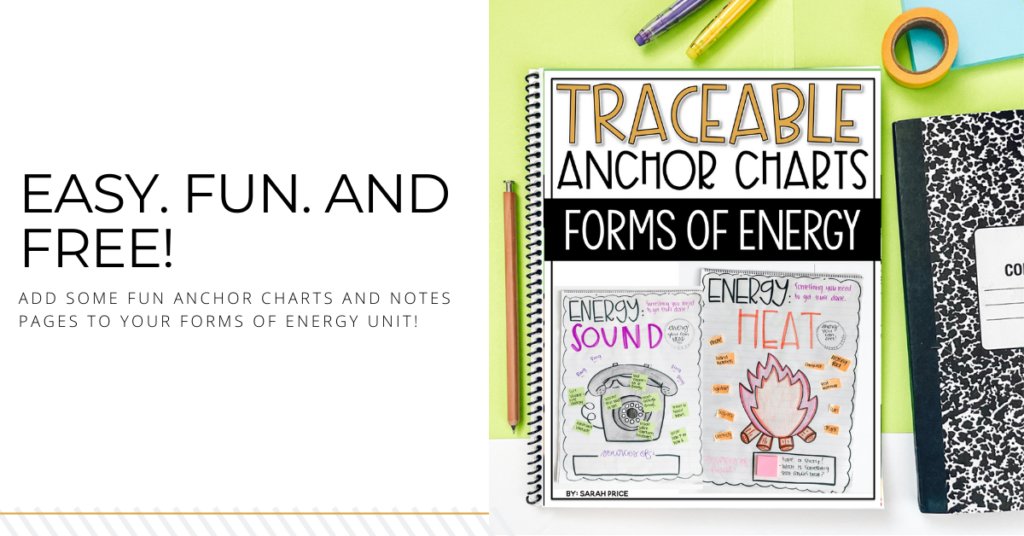
Where Do Sounds Come From! Explore the Outdoors!
Now for the fun part! Let’s take those kids outside and burn some energy! Take your class outside for a nature walk! Students LOVE this. Have your students listen for sounds that they hear while exploring the great outdoors. Then, have students fill out a recording sheet with sounds that they hear. Talk about how loud/soft and slow/fast the different sounds are. Engagement is always the best way for students to grasp more abstract concepts like sound or light waves.
How are Sounds Made! Make Some Vibrations!
What better way to teach students about sound vibrations than by an experiment! Authentic, hands-on learning is always the way to go. Students will need to learn that sounds are made by vibrations. Have students complete an experiment where they can observe different types of vibrations by using different objects to make a sound. So much engagement will be happening, trust me!

What you’ll need:
- A rubber band
- A ruler
- A lab report.
Directions:
- Place students in small groups or with a science partner.
- Give students the lab report and walk them through the directions.
- Have your students work with the different materials to create different vibrations. While they create different sounds, have them record what they observe on the recording sheet.
Teaching Sound Energy: Investigate volume and pitch! Make some music!
Get ready to make some noise with this volume and pitch lab experiment! This experiment is a particularly fun way for students to learn about volume and pitch. Remind students and review that volume is how loud or soft a sound is, while pitch is how high or low a sound is.

What you’ll need:
- Glass cups all the same size
- Water
- Metal spoon
- Food coloring (optional)
- Lab sheet
Directions:
- Take empty glass jars and set them in a straight line on a flat surface like a table.
- Then, gently tap the glasses with a spoon. Ask students what they notice about the sounds. (The sounds should all be the same.)
- Pour water into each glass. Make sure each glass has a different level of water.
- Add food coloring to make it easier to see the different levels of water. (optional)
- Use the metal spoon to tap each glass. Listen carefully to how the pitch changes.
- Then, have your students work with the different materials to create different vibrations. While they create different sounds, have them record what they observe on the recording sheet.
- When they are done, make sure to explain to students that the more water in the glass makes it harder for the glass to vibrate, so it creates a lower pitch.
Sound can travel! Let’s Play Telephone!
I don’t know about you, but my kiddos love any opportunity they get to talk in the classroom. Let them talk all they want, with a fun game of telephone! This experiment will teach students that sound can indeed travel through different mediums.

What You’ll Need:
- Two plastics cups
- String
- Scissors
- Lab sheet
Directions:
- Use a pencil to poke a hole in the center of two plastic cups.
- Cut a piece of string that is about 10 to 15 feet long.
- Thread the end of the string through the cups.
- Tie the ends of the strings in knots so they don’t fall through the hole.
- Have both children walk until the string is tight.
- Then, one child holds the cup to their ear, and the other child whispers loudly into their cup.
- While the students are holding the cups, ask them the following questions.
- What happens if you pinch the string between the two cups?
- What happens if the string between the cups isn’t pulled as tight?
- How do you think the sound travels?
- What object is the sound traveling through?
- When you are done working through the questions with the class, have your class draw a picture of their telephone. Make sure to help them understand that the sound travels along the string and must have a medium to travel through.
Make a science journal when teaching sound energy to 2nd grade!
In summary, teaching sound energy to 2nd grade can be a ton of fun with the right activities and hands-on experiments. Keep track of what your students learn by making a notebook where they can record their thoughts and ideas.
Want More Forms of Energy Experiments and Activities?
The activities in this post are from my Sound Energy Worksheets pack. This is such a fun, and also interactive, way for students to learn about sound and sound waves.
Also, be sure to save this post by pinning this to your Pinterest account. That way, teaching sound energy to 2nd grade is undeniably a breeze.
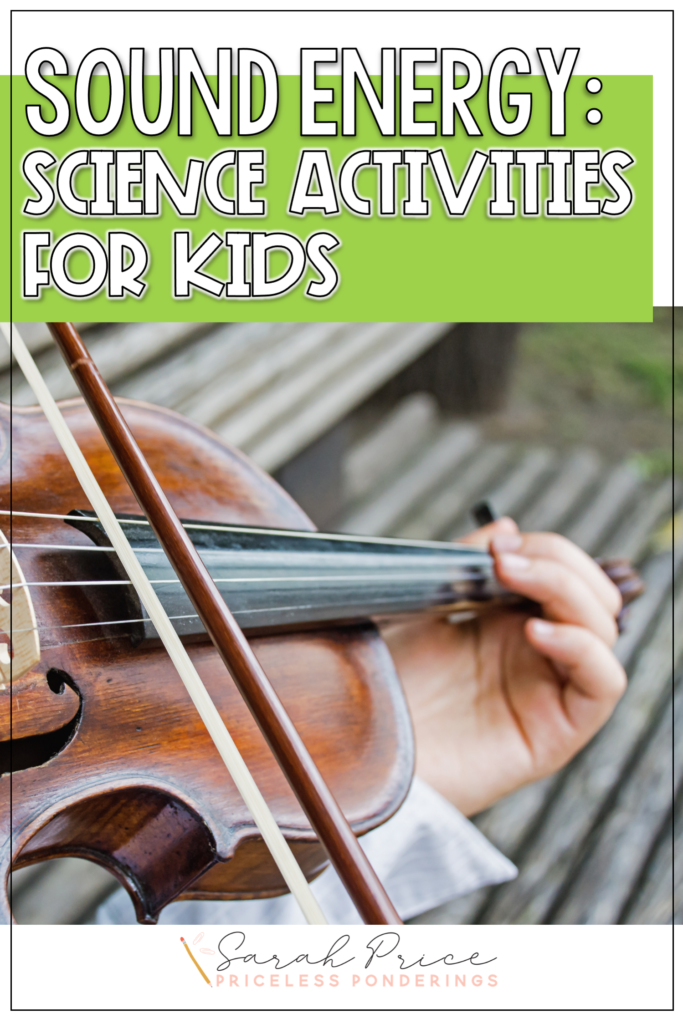
For More Science Activities, Visit These Posts!
FUN PLANT LIFE CYCLE ACTIVITIES (AND HOW TO TEACH THEM)
FORMS OF ENERGY ACTIVITIES FOR KIDS


